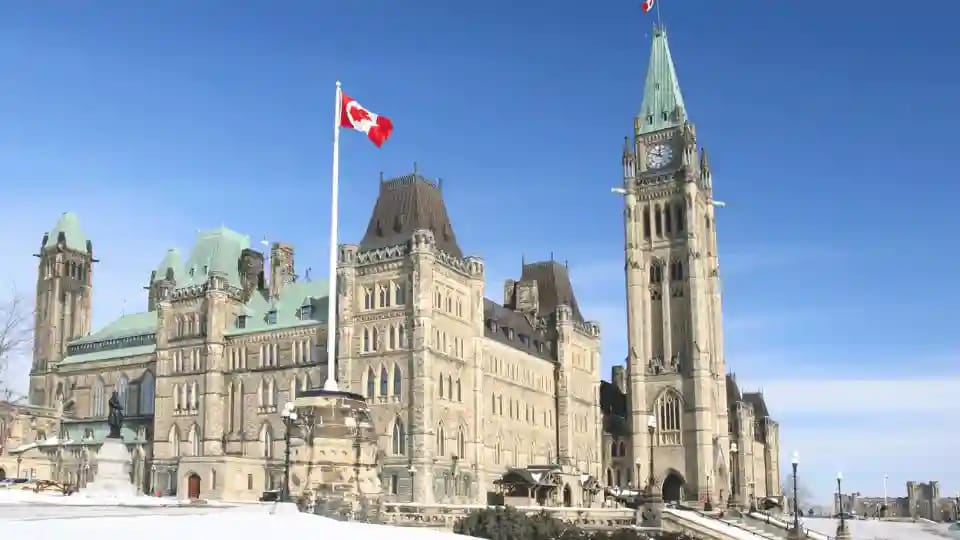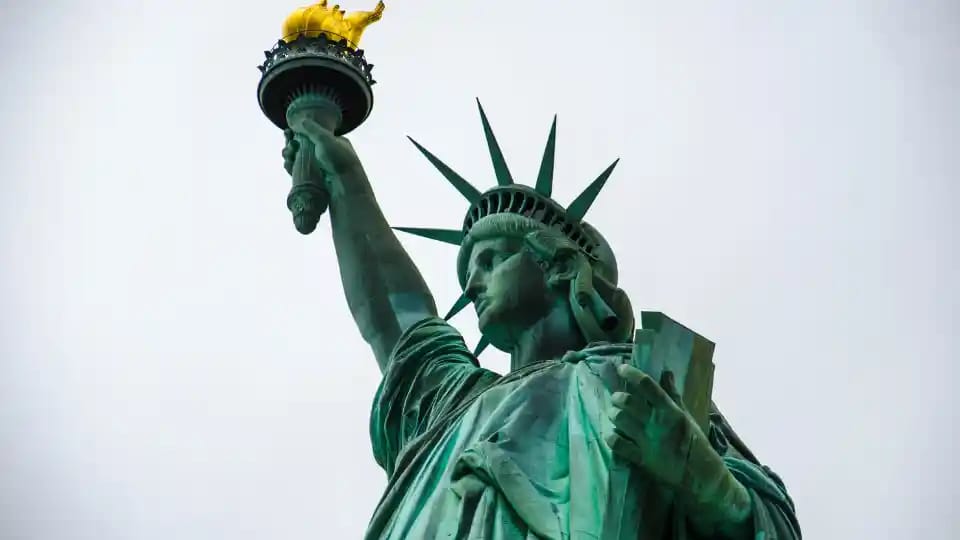Canada elections 2025: Immigration, PR, and visa policies explained
With the federal election around the corner, immigration has become one of the most debated topics in Canadian politics. Both the Liberal and Conservative parties have released their 2025 platforms, laying out where they stand on permanent residency, foreign workers, international students, and border enforcement.
Who will win? What polls show
The Liberals had appeared headed for a heavy defeat until recently. Back in early January, the CBC Poll Tracker put the Conservatives at 44%, the Liberals at 20%, the New Democratic Party (NDP) at 19%, the Quebec-based Bloc Québécois (BQ) at 9%, the Greens at 4%, and the far-right People’s Party at 2%. That scenario would have delivered the Conservatives a landslide, with more than 200 seats.
But the tide turned after Justin Trudeau announced on January 6 that he would resign once the Liberals picked a new leader. Mark Carney, former governor of the Bank of Canada and the Bank of England, was elected Liberal leader on March 9 and became prime minister on March 14.
As of the latest update to the CBC Poll Tracker, the Liberals were polling at 43.1%, compared to the Conservatives’ 38.4%. The NDP had 8.3%, the BQ 5.8% nationally (25.4% in Quebec), the Greens 2.2%, and the People’s Party 1.4%. It marks a striking turnaround for the Liberals, who were 24 points behind in January and are now ahead by 4.7 points.
Seat projections currently show:
191 seats for the Liberals
123 for the Conservatives
23 for the BQ
Five for the NDP
One for the Greens
With 172 seats needed for a majority, the tracker gives the Liberals an 80% chance of securing a majority and a 15% chance of winning a plurality without one.
Why Canadian elections matter to Indians
Canada’s immigration policies have a direct impact on hundreds of thousands of Indian nationals.
As of late 2023, Canada hosted around 1,040,985 international students. Of these, 278,860 were from India, making up nearly 27% of the total. The growth has been dramatic—in 2015, just 31,920 Indian students held study permits.
In terms of employment, more than 26,000 Indian nationals were working in Canada under the Temporary Foreign Worker Program in 2023, mostly in low-wage roles. In addition, many Indian graduates in Canada transitioned to work permits through the Post-Graduation Work Permit Programme, bolstering the country’s skilled workforce.
“What's most concerning right now is the slowdown in investment and business, as well as the drop in local business valuation. Everything has slowed down due to high interest rates and lower appraisals of property and business. Many insiders are facing severe financial pressure—similar to the 2008 crisis,” said Varun Singh, managing director at XIPHIAS Immigration, speaking to Business Standard.
“Visa rejections based on political background are neither right nor ethical. Families are suffering because of the high rejection rates. Just look at the numbers—visa cancellations by the Canadian embassy have crossed 2 million,” he added.
Immigration targets and population caps
Immigration levels are usually defined in Canada’s multi-year Immigration Levels Plan, which until recently focused only on permanent residents. In October 2024, the federal government introduced temporary resident targets for the first time, covering students and workers.
Liberal leader Mark Carney has said the current system isn’t working. “Caps on immigration will remain in place until we’ve expanded housing,” he said in a recent interview.
The Liberals’ platform proposes keeping permanent resident admissions below 1% of Canada’s population beyond 2027. The current target is 395,000 permanent residents in 2025—less than 1% of the projected population of 41.5 million.
This suggests no major change from existing levels.
On the other side, Conservative leader Pierre Poilievre has linked immigration numbers to homebuilding. At a press conference in January 2024, he floated the idea of tying immigration to infrastructure. “We’ll bring it back to sustainable levels like we had under the Harper government,” Poilievre said.
Between 2006 and 2015, Canada admitted between 247,000 and 281,000 permanent residents each year. It remains unclear whether the Conservatives want to replicate these numbers in absolute terms or scale them to match Canada’s current population.
The party also says immigration should not grow faster than housing, jobs, or health care access.
Temporary foreign workers and students
Both parties have raised concerns over the growing number of temporary residents, especially after the pandemic.
As of January 1, 2025, Canada had 3.02 million temporary residents, or about 7.27% of the population.
The Liberal Party has proposed reducing this to below 5% by the end of 2027. This aligns with measures taken under former immigration minister Marc Miller, including:
< Adding temporary resident targets to the immigration plan
< Placing a cap on study permit applications
< Restricting access to post-graduation and spousal open work permits
< Reducing net new temporary arrivals by 150,000 between 2025 and 2026
Meanwhile, Poilievre has sharply criticised the Temporary Foreign Worker Program. “We will crack down on fraud and dramatically reduce the number of temporary foreign workers and foreign students,” he said during a campaign event.
The Conservative platform also proposes:
< Making union Labour Market Impact Assessments (LMIAs) a pre-condition for hiring foreign workers
< Limiting temporary workers to rare exceptions like agriculture or small towns with labour shortages
< Requiring criminal background checks for all international students
Currently, students are not automatically required to submit police certificates when applying for study permits, unless requested by an officer.
Economic immigration and jobs
While the Liberal Party outlines its support for economic migration, the Conservative platform is silent on it.
The Liberals say they want to “revitalise” the Global Skills Strategy to attract high-skilled workers, particularly from the US. The plan also promises faster recognition of foreign credentials, especially in sectors like healthcare and trades, which are regulated at the provincial level.
Poilievre has previously pitched a “blue seal” national licensing standard that provinces could adopt for quicker integration of immigrant healthcare workers.
Asylum seekers and refugee claims
Both parties have taken different stances on how to manage the rise in asylum seekers, many of whom have crossed into Canada from the US.
Carney blamed the increase on US migration crackdowns. “Canada and the US must work in closer collaboration in order to manage this situation,” he said during a campaign stop.
The Liberals want to improve legal aid and speed up case resolution for asylum seekers. Their platform also pledges:
< Legal representation for refugee claimants
< Faster processing through additional resources
< Support for fair removals after due process
The Conservatives, however, have taken a harder stance. “If they’re a fraudster, they will have to go,” Poilievre told supporters recently.
Their platform proposes:
< Processing refugee claims on a “last-in, first-out” basis
< Departure tracking to monitor visa overstays
Security, border control and public safety
Both parties talk tough on enforcement, but the Conservatives have made security a centrepiece of their platform.
The Liberal plan includes tighter visa rules and quicker removals of inadmissible individuals, along with more resources for security screenings—policies largely in line with changes announced by Marc Miller in 2025.
The Conservative Party is calling for:
< Deployment of Canadian Forces and military helicopters at the border
< More powers for the Canada Border Services Agency (CBSA)
< Expedited removal of visitors who commit crimes
Francophone immigration
Mark Carney wants 12% of newcomers outside Quebec to be francophone by 2029. This builds on current plans, which aim for 8.5% in 2025, 9.5% in 2026, and 10% in 2027.
While Poilievre has voiced support for French-language protection and francophone immigration, his party’s 2025 platform does not provide a target.
Other immigration-related proposals
Liberal Party promises:
- Use digital tools to cut processing delays
- Work with provinces on settlement and status management
- Maintain Quebec’s control over its immigration levels
Conservative Party pledges to:
< Reject the Century Initiative’s population growth targets for major cities
< Oppose drastic expansion plans for Toronto, Vancouver, Montreal, Calgary, and Ottawa
< Rebalance immigration to support smaller communities



